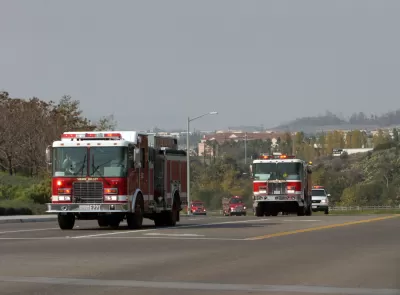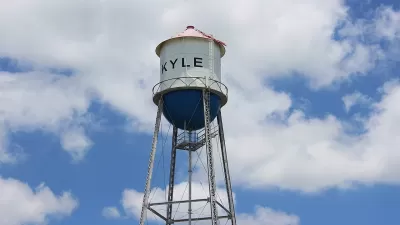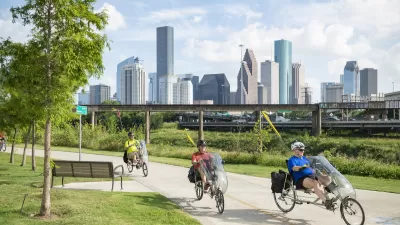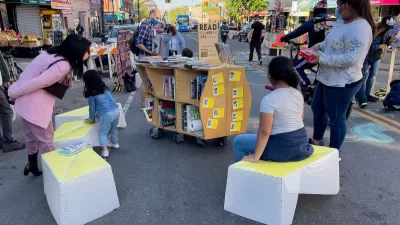Fire standards and street design manuals, meant to protect people, actually make them less safe by damaging walkability and encouraging driving—a classic example of silo thinking.

"Of all the urbanism specialists with tunnel vision, fire chiefs, fire marshals, and traffic engineers are probably the most dangerous. And by “dangerous,” I don’t just mean that they’re a threat to good urbanism; they also get people killed, which is exactly the opposite of what they are commissioned to do. A classic example of their silo thinking is playing out right now in Celebration, Florida, where the proposed measures of eliminating on-street parking spaces and eliminating street trees will almost certainly leave Celebration a less safe place than it is today.
Let’s look at things from both a common-sense perspective and a data-driven perspective. Getting rid of street trees does some really bad things for safety: First, it eliminates the first line of defense for those who are walking or biking on the sidewalk (when the streets are too dangerous for biking). A car crashing into a tree at 35 miles per hour will deploy the airbags, but the driver and passengers will likely walk away with little more than bruises. But a car traveling 35 miles per hour that crashes into someone who is biking or walking will likely kill them. Higher speed = more deaths and injuries..."
"...the logical conclusion is that our traffic engineering standards are killing about 23,000 people per year in the US! As with fire standards, traffic engineers should be embracing traditional urbanism with open arms because it saves so many lives per year!"
FULL STORY: How Fire Chiefs & Traffic Engineers Make Places Less Safe

Study: Maui’s Plan to Convert Vacation Rentals to Long-Term Housing Could Cause Nearly $1 Billion Economic Loss
The plan would reduce visitor accommodation by 25,% resulting in 1,900 jobs lost.

Placekeeping: Setting a New Precedent for City Planners
How a preservation-based approach to redevelopment and urban design can prevent displacement and honor legacy communities.

Using Old Oil and Gas Wells for Green Energy Storage
Penn State researchers have found that repurposing abandoned oil and gas wells for geothermal-assisted compressed-air energy storage can boost efficiency, reduce environmental risks, and support clean energy and job transitions.

Washington State Plans Ambitious ‘Cycle Highway’ Network
The state is directing funding to close gaps in its existing bike network and make long-distance trips more accessible.

Homeowners Blame PG&E for Delays in ADU Permits
The utility says it has dramatically reduced its backlog, but applicants say they still face months-long delays for approvals for new electrical work.

Rethinking Wildfire Defense: How a Landscape Approach Can Protect Neighborhoods
Post-fire analysis of the Eaton Fire reveals that a landscape approach — including fire-resistant vegetation, home hardening, and strategic planning — can help reduce wildfire risk, challenging assumptions that trees and plants are primary fire hazards.
Urban Design for Planners 1: Software Tools
This six-course series explores essential urban design concepts using open source software and equips planners with the tools they need to participate fully in the urban design process.
Planning for Universal Design
Learn the tools for implementing Universal Design in planning regulations.
Borough of Carlisle
Caltrans
Heyer Gruel & Associates PA
Institute for Housing and Urban Development Studies (IHS)
City of Grandview
Harvard GSD Executive Education
Salt Lake City
NYU Wagner Graduate School of Public Service
City of Cambridge, Maryland





























